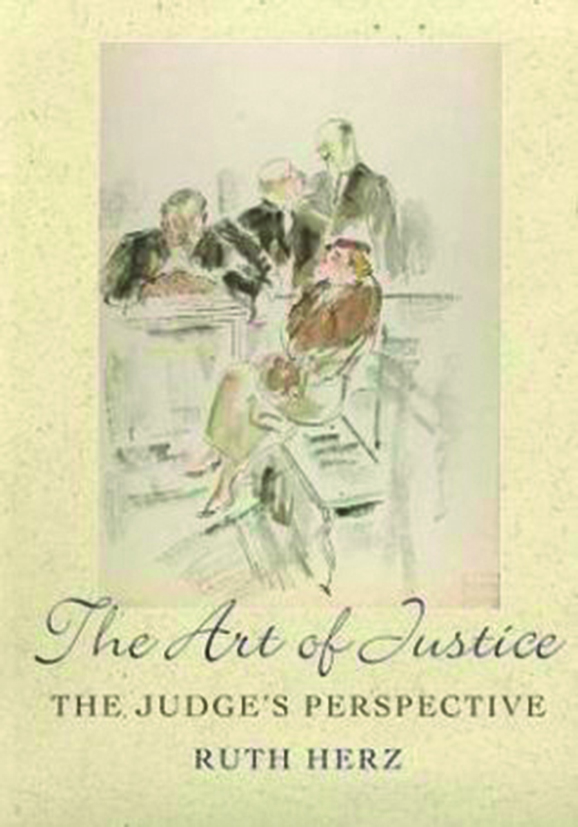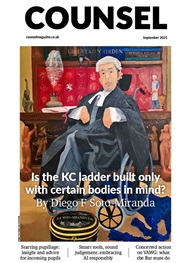*/
 The Art of Justice: The Judge’s Perspective
The Art of Justice: The Judge’s Perspective
by Ruth Herz
Published by Hart Publishing, September 2012
ISBN number 1849461279
Price: £35
“The Art of Justice” should be given a sub title: The Secret Lives of Judges, rather than the Judges Perspective. Ruth Herz, a former judge, and now visiting Professor at Birkbeck, is at pains to point out that judges, despite their independent and impartial appearance are only human, with their own hobbies, talents or secret passions.
It is the not so secret passion of Judge Pierre Cavellat during his 40-year judicial career that drives this book, and appears to have inspired Herz to develop a passion for art criticism and interpretation. Part biography, part art critique, part social commentary with an added smidgeon of jurisprudence, the book explores how and why a well respected judge, a strict family man and product of his time, secretly and perhaps not so secretly took his pens and paper into court, not just to make notes but to sketch proceedings.
Cavellat’s art is unique, his sketches and later paintings are not the depictions of the courtroom artist, or the courtroom caricatures produced for amusement or to hang on chambers walls. His drawings are personal depictions of those who appeared before him, and were never for a wider viewing population. Had Cavellat’s daughter followed his deathbed instructions and burned his collection, this rare opportunity to view his courtroom from his and the elevated bench perspective would have been lost. The personal nature of the drawings imbues them with a social and political commentary that Cavellat could not openly express in his judicial role. The reader is encouraged to explore how he viewed those who appeared before him, whatever their circumstances and the circumstances of France from the 1930s until his death in 1995.
Herz separates his works into courtroom drawings and later paintings, allowing her to contrast the earlier ‘live life’ drawings with his increasingly allegorical, deeper works post retirement. The commentary is Herz’s critical assessment of a collection of observations. She applies the conventions of art appreciation, and overlays the classic allegorical and symbolic interpretation with a touch of legal knowledge and judicial insight. Cavellat’s lack of records, notes or personal comment on his artwork means that Herz, throughout the book, is able to convincingly explain what we see, or perhaps what she wants us to see.
I wonder what Cavellat’s reactions would be to this modern female judge’s take on his work and her biographical commentary? Perhaps he would have added a postscript sketch which would have clarified the true purpose of this book. In my household it was deemed interesting reading (to the lawyer and the fine art student) but perhaps a judge’s secret passion rather than a best seller.
Julie Whitby, Castle Chambers, is a criminal practitioner specialising in sexual offences. She transferred to the Bar after a career in the hospitality and training industry and is married to an artist.
Cavellat’s art is unique, his sketches and later paintings are not the depictions of the courtroom artist, or the courtroom caricatures produced for amusement or to hang on chambers walls. His drawings are personal depictions of those who appeared before him, and were never for a wider viewing population. Had Cavellat’s daughter followed his deathbed instructions and burned his collection, this rare opportunity to view his courtroom from his and the elevated bench perspective would have been lost. The personal nature of the drawings imbues them with a social and political commentary that Cavellat could not openly express in his judicial role. The reader is encouraged to explore how he viewed those who appeared before him, whatever their circumstances and the circumstances of France from the 1930s until his death in 1995.
Herz separates his works into courtroom drawings and later paintings, allowing her to contrast the earlier ‘live life’ drawings with his increasingly allegorical, deeper works post retirement. The commentary is Herz’s critical assessment of a collection of observations. She applies the conventions of art appreciation, and overlays the classic allegorical and symbolic interpretation with a touch of legal knowledge and judicial insight. Cavellat’s lack of records, notes or personal comment on his artwork means that Herz, throughout the book, is able to convincingly explain what we see, or perhaps what she wants us to see.
I wonder what Cavellat’s reactions would be to this modern female judge’s take on his work and her biographical commentary? Perhaps he would have added a postscript sketch which would have clarified the true purpose of this book. In my household it was deemed interesting reading (to the lawyer and the fine art student) but perhaps a judge’s secret passion rather than a best seller.
Julie Whitby, Castle Chambers, is a criminal practitioner specialising in sexual offences. She transferred to the Bar after a career in the hospitality and training industry and is married to an artist.
 The Art of Justice: The Judge’s Perspective
The Art of Justice: The Judge’s Perspective
by Ruth Herz
Published by Hart Publishing, September 2012
ISBN number 1849461279
Price: £35
“The Art of Justice” should be given a sub title: The Secret Lives of Judges, rather than the Judges Perspective. Ruth Herz, a former judge, and now visiting Professor at Birkbeck, is at pains to point out that judges, despite their independent and impartial appearance are only human, with their own hobbies, talents or secret passions.
It is the not so secret passion of Judge Pierre Cavellat during his 40-year judicial career that drives this book, and appears to have inspired Herz to develop a passion for art criticism and interpretation. Part biography, part art critique, part social commentary with an added smidgeon of jurisprudence, the book explores how and why a well respected judge, a strict family man and product of his time, secretly and perhaps not so secretly took his pens and paper into court, not just to make notes but to sketch proceedings.


Chair of the Bar sets out a busy calendar for the rest of the year
Why Virtual Assistants Can Meet the Legal Profession’s Exacting Standards
By Louise Crush of Westgate Wealth Management
Examined by Marie Law, Director of Toxicology at AlphaBiolabs
Time is precious for barristers. Every moment spent chasing paperwork, organising diaries, or managing admin is time taken away from what matters most: preparation, advocacy and your clients. That’s where Eden Assistants step in
AlphaBiolabs has announced its latest Giving Back donation to RAY Ceredigion, a grassroots West Wales charity that provides play, learning and community opportunities for families across Ceredigion County
Despite increased awareness, why are AI hallucinations continuing to infiltrate court cases at an alarming rate? Matthew Lee investigates
Many disabled barristers face entrenched obstacles to KC appointment – both procedural and systemic, writes Diego F Soto-Miranda
The proscribing of Palestine Action under the Terrorism Act is an assault on the English language and on civil liberties, argues Paul Harris SC, founder of the Bar Human Rights Committee
For over three decades, the Bar Mock Trial Competition has boosted the skills, knowledge and confidence of tens of thousands of state school students – as sixth-form teacher Conor Duffy and Young Citizens’ Akasa Pradhan report
Suzie Miller’s latest play puts the legal system centre stage once more. Will it galvanise change? asks Rehna Azim